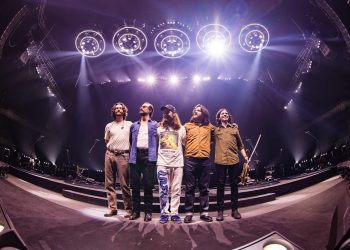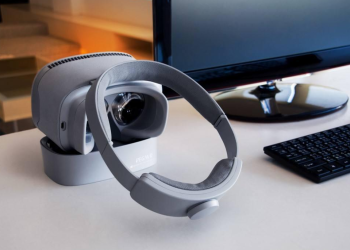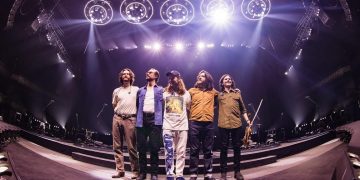Introduction to Digital Art
Digital art encompasses a diverse range of creative expressions that utilize digital technologies as the primary medium. From digital paintings to multimedia installations, digital art has emerged as a dynamic and influential form of artistic expression in the modern age.
Historical Evolution of Digital Art
The roots of digital art can be traced back to the mid-20th century with the advent of computer graphics and early experiments in digital imaging. Artists began exploring the creative possibilities of technology, laying the foundation for the development of digital art as we know it today.
Technology’s Impact on Artistic Expression
Advancements in technology have profoundly impacted artistic expression, providing artists with innovative tools and techniques to unleash their creativity. Digital art software, such as Adobe Photoshop and Illustrator, has revolutionized the way artists manipulate and transform digital images, opening up new avenues for experimentation and exploration.
Tools and Techniques in Digital Art
Digital artists utilize a wide array of tools and techniques to create their works, ranging from digital painting and drawing to 3D modeling and animation. These tools offer unprecedented flexibility and control, allowing artists to seamlessly blend traditional artistic practices with cutting-edge digital technologies.
The Democratization of Art
One of the most significant impacts of technology on art is the democratization of the creative process. Digital platforms and social media have democratized access to art, enabling artists to share their work with global audiences instantaneously. This accessibility has empowered emerging artists and fostered a vibrant online community of creators and enthusiasts.
Virtual Reality and Augmented Reality in Art
The emergence of virtual reality (VR) and augmented reality (AR) technologies has further expanded the possibilities of digital art. Artists are harnessing the immersive capabilities of VR and AR to create interactive and immersive experiences that transcend traditional boundaries of space and time.
Challenges and Criticisms
Despite its widespread adoption and popularity, digital art also faces challenges and criticisms. Some critics argue that digital art lacks the tangible qualities and authenticity of traditional art forms, while others raise concerns about the over-reliance on technology and the erosion of traditional artistic skills.
Digital Art in Contemporary Culture
Digital art has become increasingly integrated into contemporary culture, influencing everything from advertising and entertainment to fashion and design. Digital artists are reshaping our visual landscape, challenging conventional notions of art and aesthetics, and pushing the boundaries of creativity.
Commercialization and Monetization
The commercialization of digital art has opened up new opportunities for artists to monetize their work. From selling digital prints and merchandise to licensing their creations for use in commercial projects, digital artists have a range of avenues for generating income from their art.
Legal and Ethical Considerations
As digital art continues to evolve, it raises complex legal and ethical issues surrounding copyright, ownership, and appropriation. Artists must navigate these challenges carefully to protect their intellectual property rights and ensure ethical practices in their creative endeavors.
Education and Training in Digital Art
Formal education and training play a crucial role in preparing aspiring digital artists for success in the industry. Specialized programs and courses in digital art provide students with the technical skills, creative expertise, and professional knowledge needed to thrive in a rapidly changing landscape.
Community and Collaboration
Digital art communities and collaborative platforms play a vital role in fostering creativity and collaboration among artists. These online spaces provide opportunities for artists to connect, share ideas, collaborate on projects, and receive feedback from peers and mentors.
The Future of Digital Art
As technology continues to advance, the future of digital art holds boundless possibilities. From AI-generated art to immersive virtual experiences, the intersection of technology and creativity promises to reshape the art world in profound and unexpected ways.
Impact on Traditional Art Forms
While digital art has its roots in technology, its impact extends far beyond the digital realm. Digital artists draw inspiration from traditional art forms, blurring the boundaries between the digital and the physical, and challenging traditional notions of art and creativity.
Conclusion
The rise of digital art represents a convergence of technology and creativity that is reshaping the landscape of contemporary art. As artists continue to push the boundaries of digital innovation, the intersection of technology and creativity promises to inspire new forms of expression, foster artistic collaboration, and enrich our cultural landscape.

FAQs After The Conclusion:
- Can anyone become a digital artist, or do you need special skills?While anyone can explore digital art, developing proficiency requires dedication, creativity, and technical skills. Formal education and training can also provide valuable expertise in digital art techniques and technologies.
- Is digital art considered “real” art?Yes, digital art is recognized as a legitimate form of artistic expression. Like traditional art forms, digital art requires creativity, skill, and vision to create meaningful and impactful works.
- How do digital artists make money?Digital artists can generate income through various avenues, including selling digital prints, licensing their work for commercial use, offering commissions, and creating merchandise such as prints, apparel, and accessories.
- What are some common misconceptions about digital art?Common misconceptions about digital art include the belief that it lacks authenticity compared to traditional art forms, or that it’s easier or less time-consuming to create than traditional art.
- Can digital art be exhibited in galleries and museums?Yes, digital art is increasingly being exhibited in galleries, museums, and art institutions around the world. Digital art exhibitions showcase a wide range of digital artworks, including digital paintings, installations, interactive experiences, and more.
- Do I need expensive software and equipment to create digital art?While professional-grade software and equipment can enhance the digital art creation process, there are many affordable or free alternatives available for aspiring digital artists. What’s most important is creativity, skill, and dedication to the craft.
- Are there opportunities for collaboration in the digital art community?Yes, the digital art community offers numerous opportunities for collaboration, including joint projects, group exhibitions, online challenges, and collaborative workshops. Collaborating with other artists can inspire creativity, foster connections, and enrich the creative process.
- How can I get started with digital art if I’m a beginner?Beginners can start exploring digital art by experimenting with basic tools and techniques using affordable or free software. Online tutorials, workshops, and communities can also provide guidance and support for aspiring digital artists on their creative journey.














